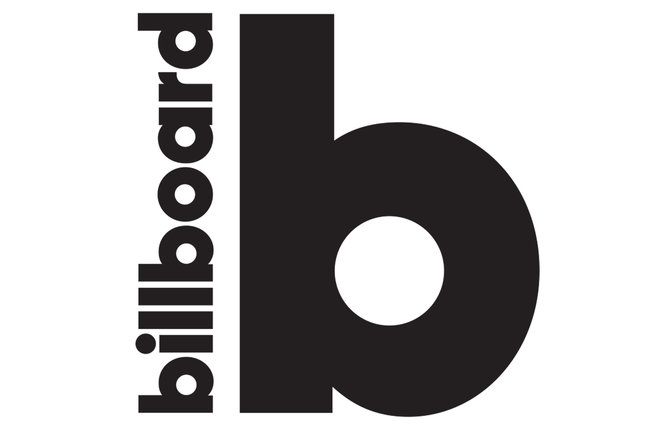It is our goal at Billboard to accurately portray in an unbiased manner how music performs relative to other music.
That job has become much more complicated throughout the years. For decades, there were just physical retail sales and radio airplay, whereas today there are many ways to consume and not all are created equal - from an access perspective, from a user-control perspective, from a revenue perspective, from a fraud-protection perspective and so on. Thus, Billboard frequently reevaluates - with the advisement of our constituents (artists, labels, distributors, publishers, consumers, etc.) - how to properly measure and report this activity. It is our obligation to take all methods of distribution and consumption into consideration; similarly, it is our obligation to weigh the ramifications of any changes.
This has been an especially challenging year for these deliberations, as we are seeing rapid adoption of new streaming and distribution models that are changing user experience and behavior at an unprecedented pace.
Among the changes we implemented or seriously considered this year for our charts are (i) how to weigh paid vs. ad-supported and free streams, (ii) the weighting of programmed streams (on a service like Pandora), (iii) whether streams of YouTube official music videos should be included in the Billboard 200 albums chart, (iv) how to address the increase in, and uniqueness of, sales of music through direct-to-consumer offers, (v) whether to modify what’s allowable for concert ticket/album bundle sale redemption offers, and (vi) how to address the rise of promotions that incentivize consumer streaming.
In recognition of an evolving music market and the means that consumers engage with music, Billboard has decided to implement changes on how it incorporates streaming data into our charts.
Currently, Billboard has two defined types of streaming plays for the Billboard Hot 100 songs chart (and our other hybrid songs charts): on-demand (such as Amazon Music, Apple Music, Spotify and YouTube) and programmed (such as Pandora and Slacker Radio), with on-demand having a greater weight. The Billboard 200 -- and our other consumption-ranked albums charts -- uses a single tier of only on-demand audio streams (paid or ad-supported) from subscriptions services. Video streams do not contribute to the Billboard 200’s calculations, but are incorporated into the Hot 100.
Beginning in 2018, plays occurring on paid subscription-based services (such as Amazon Music and Apple Music) or on the paid subscription tiers of hybrid paid/ad-supported platforms (such as SoundCloud and Spotify) will be given more weight in chart calculations than those plays on pure ad-supported services (such as YouTube) or on the non-paid tiers of hybrid paid/ad-supported services.
In 2018, Billboard will have multiple weighted tiers of streaming plays for the Hot 100, which take into account paid subscription streams, ad-supported streams, and programmed streams. Streaming, along with all-genre radio airplay and digital songs sales data, make up the three metrics of the Hot 100’s methodology.
The Billboard 200 will now include two tiers of on-demand audio streams: paid subscription audio streams and ad-supported audio streams. The chart will continue to not incorporate video streams. The Billboard 200 ranks the most popular albums of the week based on multi-metric consumption, which includes traditional album sales, track equivalent albums, and streaming equivalent albums.
The shift to a multi-level streaming approach to Billboard’s chart methodology is a reflection of how music is now being consumed on streaming services, migrating from a pure on-demand experience to a more diverse selection of listening preferences (including playlists and radio), and the various options in which a consumer can access music based on their subscription commitment.
It is Billboard’s belief that assigning values to the levels of consumer engagement and access - along with the compensation derived from those options - better reflects the varied user activity occurring on these services.
Billboard remains committed to being the book of record when it comes to tracking fan activity in and around music. We will always remain responsive to the marketplace so that our charts continue to be the most credible and relevant measure of music popularity.
Below is a list of current streaming services contributing to the Billboard Hot 100 and Billboard 200, as well as corresponding genre songs and albums charts.
Hot 100 (+ Genre Charts) Streaming
| SERVICE | AUDIO/VIDEO | DATA TYPE |
|---|---|---|
| Amazon Music Unlimited | Audio | Paid |
| Amazon Prime | Audio | Paid |
| Apple Music | Audio | Paid |
| Apple Music | Video | Paid |
| Google Play | Audio | Paid |
| Groove Music Pass (Xbox) | Audio | Paid |
| Medianet | Audio | Paid |
| Napster | Audio | Paid |
| SoundCloud | Audio | Paid / Ad Supported |
| Slacker | Audio | Paid |
| Spotify | Audio | Paid / Ad Supported |
| Tidal | Audio | Paid |
| Tidal | Video | Paid |
| Vevo on YouTube | Video | Ad Supported |
| YouTube | Video | Ad Supported |
| AOL Radio (Powered by Slacker) | Audio | Programmed |
| Google Radio | Audio | Programmed |
| Napster | Audio | Programmed |
| Pandora | Audio | Programmed |
| Slacker | Audio | Programmed |
Billboard 200 (+ Genre Album Charts) Streaming Services
| SERVICE | AUDIO/VIDEO | DATA TYPE |
|---|---|---|
| Amazon Music Unlimited | Audio | Paid |
| Amazon Prime | Audio | Paid |
| Apple Music | Audio | Paid |
| Google Play | Audio | Paid |
| Groove Music Pass (Xbox) | Audio | Paid |
| Medianet | Audio | Paid |
| Napster | Audio | Paid |
| Slacker | Audio | Paid |
| SoundCloud | Audio | Paid / Ad Supported |
| Spotify | Audio | Paid / Ad Supported |
| Tidal | Audio | Paid |








